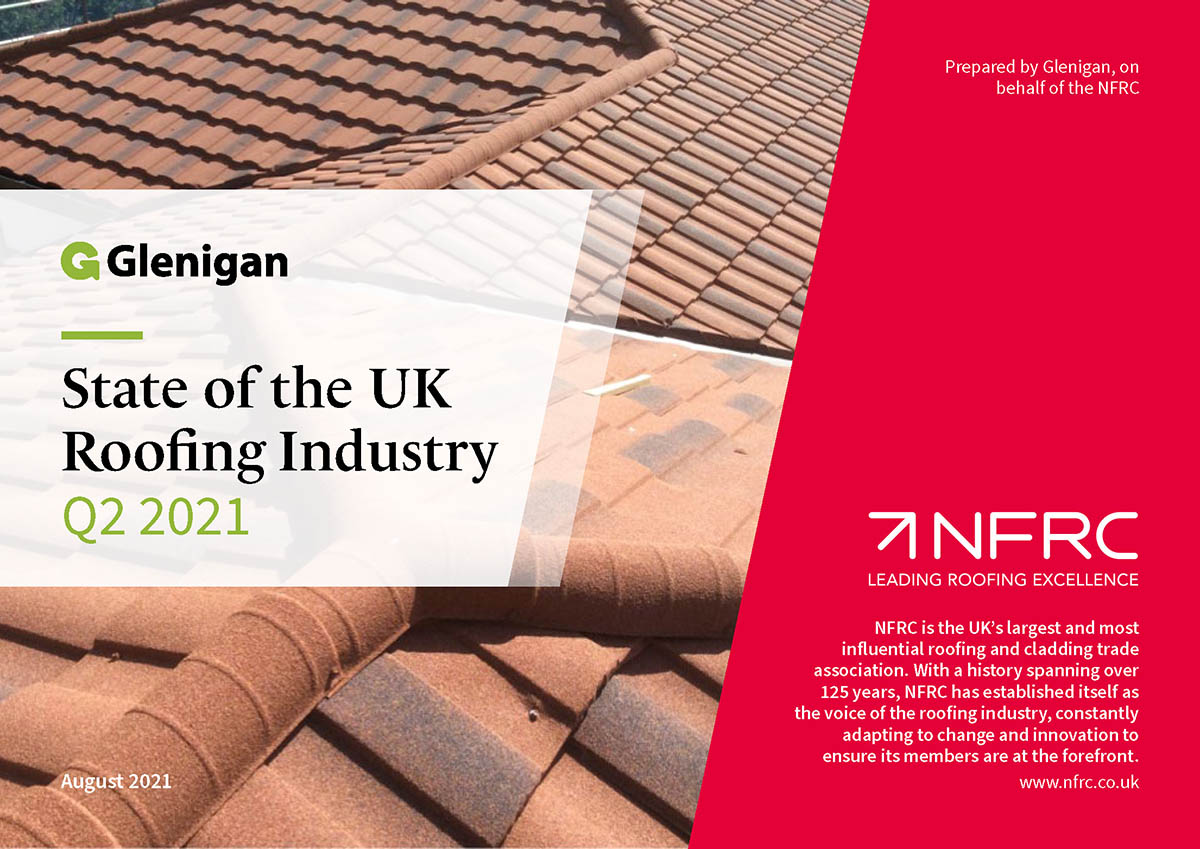The roofing and cladding industry continued to be blighted by material and skill shortages as well as spirally cost increases in the second quarter of the year, according to the NFRC/Glenigan State of the Roofing Industry Survey.
Four out of five (81 per cent) roofing contractors saw a deterioration in material availability in the second quarter of the year, with the most common shortage areas still being concrete roof tiles, followed by timber battens, insulation, general timber and clay tiles. Every single respondent to the survey reported that the price of materials went up in the previous quarter, with some reporting price rises as high as 300 per cent on some products.
Three quarters (76 per cent) of respondents also reported recruitment difficulties in the last quarter, up from 44 per cent in the first three months of the year. Almost half (47 per cent) of contractors struggled to find roof slaters and tilers, with 27 per cent finding it hard to even find general labourers. The shortage of labour is impacting wage rates, with 58 per cent of firms reporting rising labour costs.
The report also found:
- A net balance of 53 per cent of contractors saw an increase in their workloads against the first quarter;
- Scotland saw the strongest rise in workload after a subdued performance in the first quarter of the year. Firms in Yorkshire and the Humber saw a drop in workloads after above-average growth in the previous two quarters;
- Over a third (35 per cent) saw a rise in enquiries on the previous quarter;
- One in ten contractors (10 per cent) increased their headcount in the last three months;
- Whilst two thirds (65 per cent) of members had payment terms of 30 days or less, only 39 per cent of these were paid within that period.
NFRC’s Head of Policy, Philip Campbell, commented on the survey results, saying:
“The second quarter of this year saw material shortages intensify further, with roofing contractors now reporting difficulty obtaining a whole range of products, not only tiles and timber but on materials as far-ranging as plastics and steel. Prices also continue to rise, with 100 per cent of respondents to this survey telling us their material prices went up in the last quarter. Contractors reported that some products had seen increases in the hundreds of per cent in recent months. It is critical that clients work with their supply chain to provide flexibility in contracts to adjust for these unprecedented increases.
“The availability of labour has also worsened, with three-quarters of contractors now experiencing recruitment difficulties. Positive workloads have meant more firms took on staff in the last quarter, but there are simply not enough roofers out there to meet the demand. Staffing has proved difficult for contractors over the last quarter as a result of the ‘pingdemic’. One member has told us he has lost 1000 days of productive hours due to staff having to self-isolate.
“Workloads are set to continue to rise for the next quarter, and indeed the next year, which is encouraging, but the industry, clients, and government must all focus on addressing the ongoing material and skills crisis we are experiencing. If we don’t start resolving these issues now, we may see a detrimental impact of the growth we have seen coming out of the pandemic.”
Commenting on the survey findings, Glenigan’s Economics Director Allan Wilen said:
“Construction continued to recover during the second quarter, with roofing contractors reporting a strong rise in workloads. Private housing and commercial repair, maintenance and improvement work and new house construction have been the best performing areas. Roofing contractors anticipate further, more broadly based growth over the next 12 months. However, the availability and cost of skilled labour and materials will be potential brakes on the pace of the recovery.”




